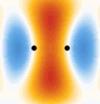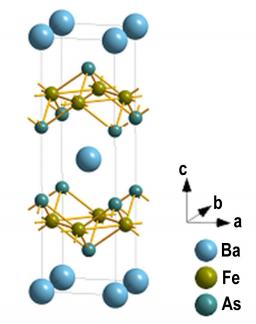Headlines 2010
1Equipe Lasers, Instrumentation Optique et Applications (LIOA), CIMAP / ENSICAEN, 6 BLVD Maréchal Juin, 14050 Caen cedex,
2 iXFiber, rue Paul Sabatier, 22300 Lannion 
3 Laboratoire CI-NAPS, Centre CYCERON, Boulevard Becquerel, 14052 Caen cedex
|
Visualizing the motion of electrons in matter requires both a spatial resolution at the Angstrom scale and a temporal resolution at the attosecond scale (1 as = 10-18 s). Such an "ultra-fast camera" opening a path towards "viewing the electrons" is demonstrated: it allows imaging molecular orbitals using the ultra-short attosecond emission from this orbital in an intense laser field. In a close collaboration, scientists from IRAMIS-SPAM, LCPMR of the Univ. Paris 6 and from CNRS (UMR 7614) have shown, in experiments realized within the CEA-Saclay, the possibility of an "Attosecond-Angstrom" imaging in the case of the nitrogen molecule N2. |
1 Max-Planck-Institut für Festkörperforschung, Heisenbergstraße 1, 70569 Stuttgart, Germany
2 Laboratoire Léon Brillouin, CEA-CNRS, CEA Saclay, 91191 Gif-sur-Yvette, France
3 Forschungsneutronenquelle Heinz Maier-Leibnitz (FRM-II), TU München, D-85747 Garching, Germany
In March 2008, superconductivity at high critical temperature (Tc> 50K) was found in iron-arsenide compounds [1] to the surprise of the scientific community. Indeed, the magnetic iron was rather regarded as an antagonist of superconductivity. Moreover, it is the first time that a so high critical temperature is reached without copper. Very like copper oxide superconductors, these new superconductors have a lamellar structure with layers of iron and "pnictures" (compounds of As, P. .., that are elements of the 15th column of the Mendeleyev table) which are interposed between plans of "charge reservoirs" (see figure). These materials also present a phase diagram similar to that of cuprates with, versus the doping concentration, an antiferromagnetic phase adjacent to the superconducting zone ( [2]).
Researchers in the Instability and Turbulence Group of IRAMIS-SPEC have succeeded in experimentally characterizing the non linear mechanical response of an amorphous granular media across the jamming transition. They have demonstrated that global rigidity sets in via the critical growth of a correlation length.
(title figure: Desplacement Field in the vicinity of an intruder dragged through a dense granular medium)
 |
|
|
|
Illustration 1: Experimental Schematics. An intruder particle is dragged by a constant force through an assembly of grains.. |
Illustration 2: Phase diagram: Two transitions are observed; fluidification transition (curve) and Jamming transition (vertical line) |
Need a grain of advice? We've got thousands! In this experiment by the Instability and Turbulence Group, a mono-layer assembly of amorphous grains are compressed in a horizontal vibrating cell (see figure 1) until it reaches its maximum density. A transition, so-called 'blocking transition (jamming)' then occurs [1,2], at which a global rigidity in the media is achieved via the dynamic percolation of force chains.
Raphaël Candelier (PhD thesis) and his colleagues have studied the subtle characteristics of such a transition by tracking one particle, "intruder," dragged at a constant force in a 2D granular media. A phase diagram has been established (figure 2), demonstrating the presence of a fluidization line, above which the "intruder" advances continuously (just as in a glassy liquid), and below which the intruder adopts an intermittent motion with a strong fluctuation enhancement close to the jamming transition.
Video clip showing the strongly non-linear response presenting spatio-temporal intermittency under the fluidization line.
The raw images of the grains are represented in the bottom section of the screen, while the upper section shows the treated image of the grains color coded according to their respective instantaneous speeds. One can clearly see that - very close to the jamming transition - the material « hesitates» between a very rigid state and a very fluid counterpart. Long-range reorganizations are also observed indicating the critical nature of the transition. The existence of scaling laws has been demonstrated quantitatively by a « crackling noise » type analysis.
This phenomenology, explored by an original experimental procedure described here, has recently been published in two journal articles [3,4].
Depending on their fracture mode, materials are traditionally gathered into three distinct classes:
- (i) ductile materials that like metals deform plastically before their fracture
- (ii) quasi-brittle materials such as rock or concrete, where "non-visible" damage starts to accumulate through microcracking, up to coalescence that yields to catastrophic failure.
- (iii) brittle materials like oxide or polymer glasses... that deform elastically up to their fracture. This occurs through the successive breaking of atomic bonds at the crack tip.
Experiments performed at IRAMIS-SPCSI show that a given material may, depending on the crack velocity, belong to two of these categories: Plexiglas®, archetype of brittle material, is found to damage through the nucleation of microcracks like quasi-brittle materials, beyond a well defined crack speed.
















